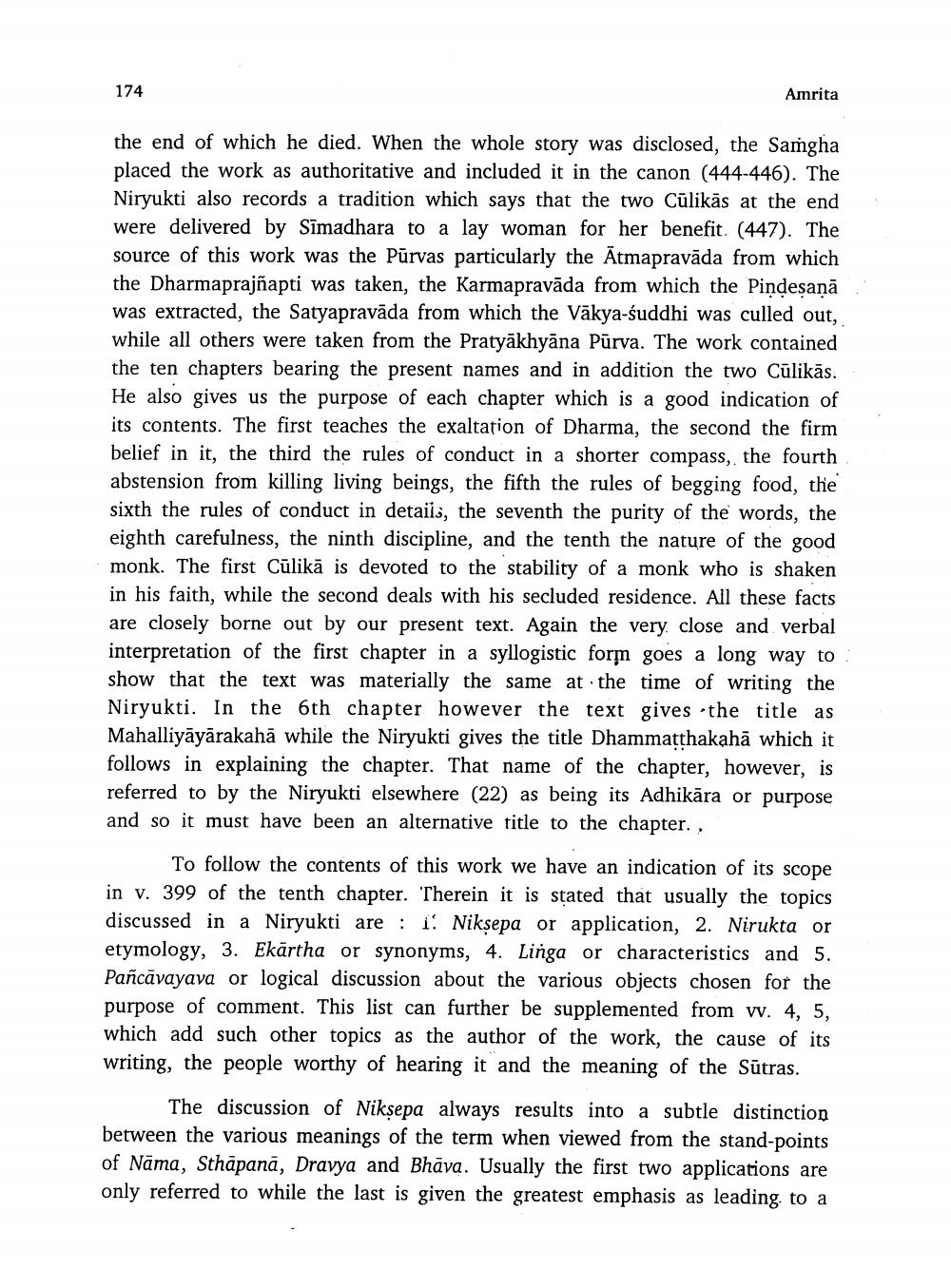________________
174
Amrita
the end of which he died. When the whole story was disclosed, the Samgha placed the work as authoritative and included it in the canon (444-446). The Niryukti also records a tradition which says that the two Cūlikās at the end were delivered by Sīmadhara to a lay woman for her benefit. (447). The source of this work was the Pūrvas particularly the Atmapravāda from which the Dharmaprajñapti was taken, the Karmapravāda from which the Pindesaņā was extracted, the Satyapravāda from which the Vākya-suddhi was culled out, while all others were taken from the Pratyākhyāna Pūrva. The work contained the ten chapters bearing the present names and in addition the two Cūlikās. He also gives us the purpose of each chapter which is a good indication of its contents. The first teaches the exaltation of Dharma, the second the firm belief in it, the third the rules of conduct in a shorter compass, the fourth abstension from killing living beings, the fifth the rules of begging food, the sixth the rules of conduct in detaiis, the seventh the purity of the words, the eighth carefulness, the ninth discipline, and the tenth the nature of the good monk. The first Cūlikā is devoted to the stability of a monk who is shaken in his faith, while the second deals with his secluded residence. All these facts are closely borne out by our present text. Again the very close and verbal interpretation of the first chapter in a syllogistic form goes a long way to show that the text was materially the same at the time of writing the Niryukti. In the 6th chapter however the text gives 'the title as Mahalliyāyārakahā while the Niryukti gives the title Dhammatthakahā which it follows in explaining the chapter. That name of the chapter, however, is referred to by the Niryukti elsewhere (22) as being its Adhikāra or purpose and so it must have been an alternative title to the chapter.,
To follow the contents of this work we have an indication of its scope in v. 399 of the tenth chapter. Therein it is stated that usually the topics discussed in a Niryukti are: i. Niksepa or application, 2. Nirukta or etymology, 3. Ekārtha or synonyms, 4. Linga or characteristics and 5. Pañcāvayava or logical discussion about the various objects chosen for the purpose of comment. This list can further be supplemented from w. 4, 5, which add such other topics as the author of the work, the cause of its writing, the people worthy of hearing it and the meaning of the Sūtras.
The discussion of Niksepa always results into a subtle distinction between the various meanings of the term when viewed from the stand-points of Nāma, Sthapanā, Dravya and Bhava. Usually the first two applications are only referred to while the last is given the greatest emphasis as leading to a




